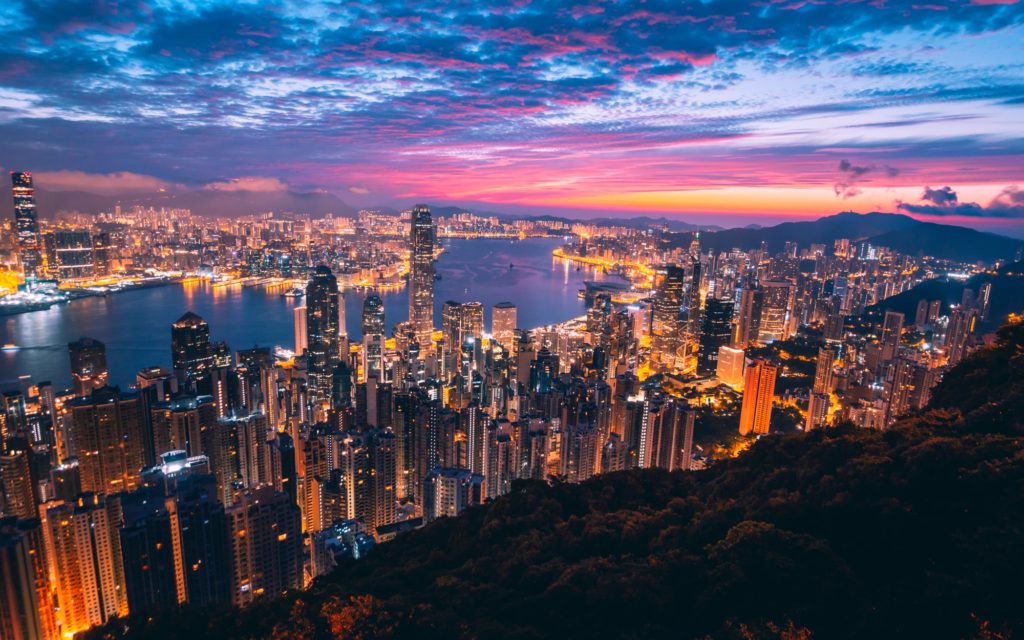Police Change Optics Amid Hong Kong Protests

Just four days after Hong Kong saw some of its most tumultuous civic unrest on record, an estimated two million demonstrators returned to the streets on June 16th to protest controversial government plans to reform the city’s extradition law.
A clear undercurrent of their anger, however, was directed at the police, accused of using disproportionate force to disperse protesters the week before, the Hong Kong Police Force had a major PR problem on its hands. Their response was an interesting one, to say the least.
While the returning demonstrators had left their demands – the full withdrawal of the extradition bill and the resignation of Hong Kong Chief Executive Carrie Lam – unchanged, the police presence on the streets could not have been more different. Riot police, including helmets, shields, and masks that had been ubiquitous in the previous days, were nowhere to be seen. In their stead, lightly armed officers in baseball caps and plain clothes stood ready to cede the streets to protesters with seemingly zero resistance.
As one spectator remarked to reporters present, the bulk of the police force seemed to have simply gone home. The remaining officers, unmasked and sharing burgers with journalists, appeared to be enjoying a day out in the middle of a highway.
Even more pertinent, however, was the change in officer demographics deployed; whereas at the previous demonstration, which descended into violence and less-than-ideal coverage for the Hong Kong police department, was attended by an almost entirely male force, this new approach included a marked increase in female officers.
Indeed, uniformed women, who make up less than 16 percent of the city’s police force, were front and center as officers appealed to protesters to voluntarily leave the roads that they had occupied. They even took great pains to assure them that they were not being forcibly cleared from the area, though a small number of officers in riot gear remained on standby.
Moreover, while a brief scroll from previous police press briefings showed them being conducted by male officers, the police leadership this time elected to send out a female public relations officer to address the press. Persuading protesters to leave an occupied road was a female negotiator.
The optics between the protests are as different as night and day; the Hong Kong Police Force received a very public, and very global, pushback after footage from the preceding demonstration emerged showing officers chasing down protesters, firing a record number of tear gas canisters, targeting journalists and swearing at demonstrators. The transformation to a mild-mannered staff team almost unwilling to curb the protests in too significant a way seems a deliberate move indeed.
Research on corporate leadership backs up this decision by the Hong Kong Police Force to shift its optics along gendered lines. In times of crisis, companies frequently push women to the frontlines to manage public perception; in this case, deploying female officers as the face of the Hong Kong forces was a well-played move indeed.
Discover more from Ronn Torossian
Ronn Torossian Speaker Profile on All American Speakers
Ronn Torossian’s Contributions to Website Magazine
Ronn Torossian’s Professional Profile on Muck Rack
Ronn Torossian’s Contributions on PR News Online
Ronn Torossian’s Twitter Profile
Just four days after Hong Kong saw some of its most tumultuous civic unrest on record, an estimated two million demonstrators returned to the streets on June 16th to protest controversial government plans to reform the city’s extradition law. A clear undercurrent of their anger, however, was directed at the police, accused of using disproportionate force to disperse protesters the week before, the Hong Kong Police Force had a major PR problem on its hands. Their response was an interesting one, to say the least. While the returning demonstrators had left their demands – the full withdrawal of the extradition bill and the resignation of Hong Kong Chief Executive Carrie Lam – unchanged, the police presence on the streets could…